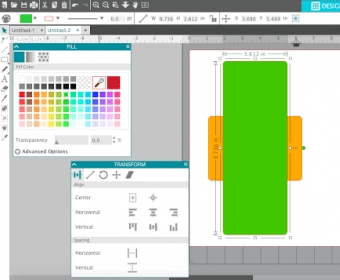

These structural health-monitoring techniques can thus be regarded as active-vibration based structural health-monitoring techniques. This vibration signature is then compared with that of a normal undamaged structure and the difference is used to extract a metric related to the health of the structure. The most promising structural health monitoring techniques currently under development involve the use of piezoelectric transducers to actively excite and sense the vibration characteristics of the structure, so called, active damage interrogation method (ADI). their ability to detect small but significant structural damage. Moreover, both of these structural health monitoring techniques are severely limited with respect to their sensitivity, i.e.

The strain tracking technique requires the costly development of a finite element strain distribution model against which to compare the measured strain distribution across the structure in order to qualify and localize the damage. Another major disadvantage of acoustic emission (AE) monitoring is that large data storage is required.

Furthermore, the generally noisy environment compromises the accuracy and reliability of the acoustic emission monitoring technique. Thus, if a power failure occurs, the structural health monitoring system is disabled. Both of these structural health monitoring techniques require continuous monitoring of the structure under evaluation in order to detect any damage to the structure. Previous structural health monitoring systems have relied primarily upon strain tracking or acoustic emission monitoring techniques, both of which have serious shortcomings. To ensure the quality of the concrete/composite bond, an effective non-destructive test (NDE) method is required to detect hidden disbonds between the composite and the concrete structure implicit in NDE.

#Deltacad 8 crack
Possible reasons for the existence of such a crack are: (1) voids resulting from uneven spreading of the adhesive (2) flexural cracks in the concrete, resulting in horizontal interface cracks, developed from the bottom tip of the flexural crack and (3) deterioration of the concrete-composite interface due to environmental exposure. The bond between the composite and the concrete may fracture in a sudden manner as a result of catastrophic propagation of a crack along the FRP-concrete interface. However, the improvement in load carrying capability of the structure repaired with advanced composite materials depends on the structural integrity of the concrete/composite interface. The advanced composite wrapping can not only be used to repair concrete structures with pre-existing damage, such as cracks, but also can reinforce new structures and increase their capability of resisting shear load and buckling during earthquakes. It has been proven to be an economical and feasible solution for hundreds of aged civil infrastructures nationwide. Repair and retrofitting of concrete structures such as columns and long span beams with fiber-reinforced polymer (FRP) in the form of wrapping is becoming a prevalent technique.


 0 kommentar(er)
0 kommentar(er)
